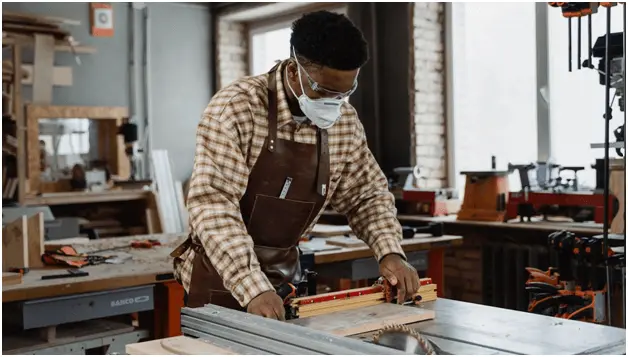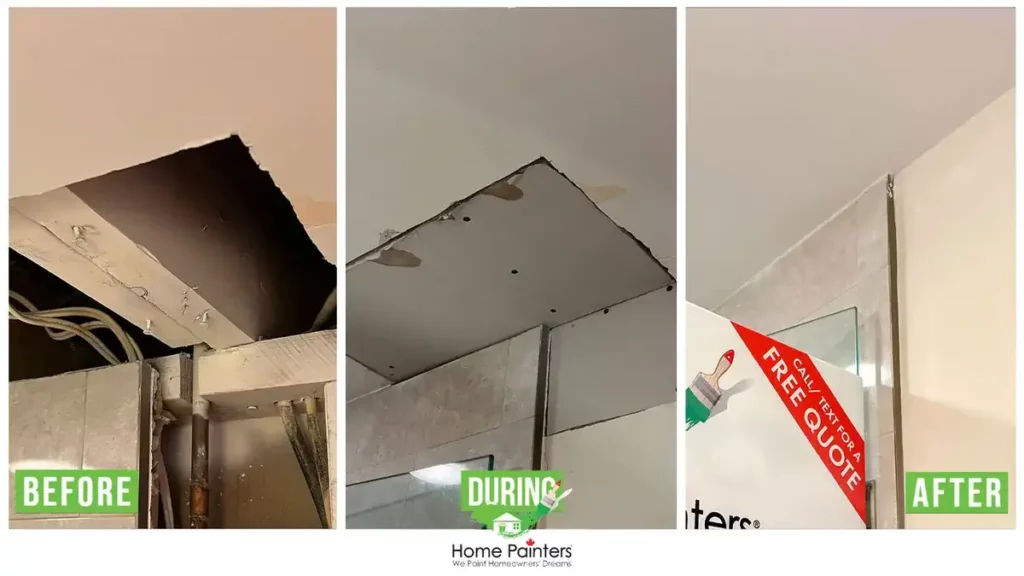Necessary Tips for Effective Drywall Repair and Setup Techniques
Effective drywall repair work and installation requires a cautious approach. Recognizing the kinds of drywall and having the right tools is important. Proper strategies and accurate measurements can greatly affect the end result. Lots of ignore vital actions like taping and fining sand, which can make or damage the final appearance. As projects progress, common challenges might occur that call for focus. Discovering these ideas can cause a more refined and successful coating.
Understanding Different Types of Drywall
Recognizing the various sorts of drywall is important for any kind of effective fixing or setup task. Drywall, generally understood as gypsum board, comes in a number of varieties customized for details applications. Standard drywall is the most widely made use of type, perfect for general interior walls and ceilings. Moisture-resistant drywall, commonly environment-friendly in color, is made for locations prone to humidity, such as kitchens and bathrooms. Fire-resistant drywall, typically tinted pink or purple, is crafted to hold up against greater temperatures and is typically utilized in garages or near furnaces. Additionally, soundproof drywall helps lower sound transmission, making it appropriate for multi-family homes or tape-recording workshops. Specialty drywall, like cement board, is used in wet locations like showers or bathtub borders. Recognizing these types helps in selecting the right material for each and every project, making certain durability and effectiveness out of commission or new installations.
Essential Tools for Drywall Repair and Installment
Having the right devices is crucial for efficient drywall fixing and installation. A quality utility blade is critical for reducing drywall sheets precisely. A drywall T-square helps guarantee straight sides, while a taping blade is essential for applying joint compound efficiently over joints. Furthermore, a drywall saw enables reducing out harmed areas or suitable drywall around fixtures.
For hanging drywall, a power drill with drywall screws is important, as it enables safe and secure and quick installment. A degree is additionally crucial to confirm that the drywall is straight and correctly aligned. A fining sand block or pole sander is necessary for raveling joint compound once it has dried. A gauging tape is vital for precise dimensions, preventing waste and guaranteeing a correct fit. Furnished with these tools, individuals can tackle drywall jobs efficiently, bring about professional-looking results.
Step-by-Step Overview to Fixing Holes and Cracks
When resolving openings and cracks in drywall, having the right tools and products is vital for a successful repair service. This guide outlines the needed items and gives a clear, step-by-step process to effectively bring back the surface area. Understanding these elements will certainly assist guarantee a smooth surface and resilient outcomes.
Devices and Products Needed
A fully equipped toolkit is important for effective drywall repair service and installation. Key devices consist of an energy knife for cutting drywall, a tape action to ensure exact sizing, and a drywall saw for larger openings. A putty knife is necessary for using joint substance smoothly, while a sanding block or post sander helps attain a seamless coating. For patching, a roll of fiberglass fit together tape or paper tape is necessary to reinforce joints. Additionally, a drill and screws are needed for securing new drywall items. Crucial materials include joint substance, guide, and paint to complete the repair service. Having these devices and products accessible assures a smoother, a lot more reliable fixing procedure, generating professional-looking outcomes.
Repair Service Refine Steps
Fixing holes and splits in drywall calls for an organized method to ensure a smooth surface. The area surrounding the damages must be cleaned extensively to eliminate dirt and debris. Next off, for small splits, a putty blade is made use of to apply a joint substance uniformly over the area. For larger openings, a spot is necessary; the damaged section is cut out, and a brand-new item of drywall is suited place, secured with screws. As soon as the spot is in position, joint compound is put on blend the edges. After drying, fining sand the area smooth is important. Finally, the fixed surface area should be primed and repainted to match the bordering wall, making certain an unnoticeable fixing.
Strategies for Putting Up Drywall Panels
Setting up drywall panels calls for cautious preparation and specific implementation to ensure a smooth and professional surface. It is vital to determine the wall area accurately and reduce the panels to fit, guaranteeing that they align with the studs. Positioning the panels flat is typically suggested, as this can boost the architectural integrity and decrease the variety of seams.
Making use of drywall screws, installers ought to safeguard the panels every 16 inches along the studs, guaranteeing a company hold. It is essential to stay clear of overdriving the screws, more info which can harm the paper surface. For edges and sides, making use of an energy knife enables tidy cuts and a snug fit.

Completing Touches: Taping, Mudding, and Fining sand
Once the drywall panels are firmly in location, the next essential action includes the finishing touches of taping, mudding, and sanding. Insulation is important for creating a seamless shift between panels and hiding joints. A quality drywall tape, either paper or fiberglass fit together, must be used over the seams, guaranteeing it sticks properly to the mud that will be used next.
Mudding, or applying joint substance, adheres to the taping procedure. This substance fills up gaps and ravel the surface area. A first coat should be used kindly, feathering the edges to blend with the drywall. After the first layer dries, subsequent layers may be required for a flawless surface.
Fining sand is required to accomplish a smooth surface area. A fine-grit sandpaper ought to be made use of to gently ravel any type of flaws. Care should be required to avoid over-sanding, which can harm the drywall - drywall contractors. Appropriately carried out, these ending up touches create a professional look all set for painting
Tips for Keeping Your Drywall After Installment
Keeping drywall after installation is essential to preserving its appearance and structural stability. Regular cleansing is needed; dust and dirt can collect, so gentle cleaning with a wet towel is recommended. House owners need to also examine for any type of indicators of moisture or mold and mildew, especially in high-humidity locations like cooking areas and washrooms. If any kind of damages takes place, it is very important to resolve it without delay to stop additional problems.
Utilizing furnishings pads can aid avoid scrapes or dents from hefty things. Furthermore, repainting the drywall with a premium, cleanable paint provides an added layer of security and makes future cleansing easier. Avoid utilizing unpleasant cleansers or tools, as these can harm the surface area. Preserving a stable interior climate with suitable moisture degrees will certainly assist avoid fracturing or deforming over time. By adhering to these suggestions, one can assure that drywall stays in excellent problem for many years ahead.
Regularly Asked Questions
The Length Of Time Does Drywall Require To Fully Dry After Setup?

Can I Set Up Drywall Over Existing Drywall?
Yes, drywall can be installed over existing drywall, yet it is important to guarantee the underlying surface area is secure and properly prepared. This approach can enhance insulation and reduce installation time, though it may add weight.
What Is the most effective Means to Soundproof Drywall?
The most effective method to soundproof drywall includes using specialized soundproofing products, such as resilient channels, acoustic caulk, and sound-dampening drywall. These techniques effectively decrease sound transmission between rooms, improving general acoustic performance in living spaces.
Just how Do I Select the Right Drywall Density?
To select the best drywall thickness, take into consideration the application and place. Requirement residential wall surfaces commonly make use of 1/2 inch, while ceilings or specialized areas may need 5/8 inch for extra toughness and soundproofing capabilities.
Exist Eco-Friendly Drywall Options Available?
Yes, eco-friendly drywall choices are readily available. These consist of items made from recycled products, gypsum boards with reduced unstable organic substances (VOCs), and those using sustainable production processes, offering environmentally-conscious selections for building and construction and restoration projects.
Having the right devices is crucial for effective drywall repair work and installment. For hanging drywall, a power drill with drywall screws is essential, as it enables fast and safe and secure installation. Secret tools include an energy knife for cutting drywall, a tape measure to guarantee exact sizing, and a drywall saw for larger holes. Yes, drywall can be set up over existing drywall, yet it is important to guarantee the underlying surface area is safe and adequately prepared. The best means to soundproof drywall involves using specialized soundproofing materials, such as resistant networks, acoustic caulk, and sound-dampening drywall.